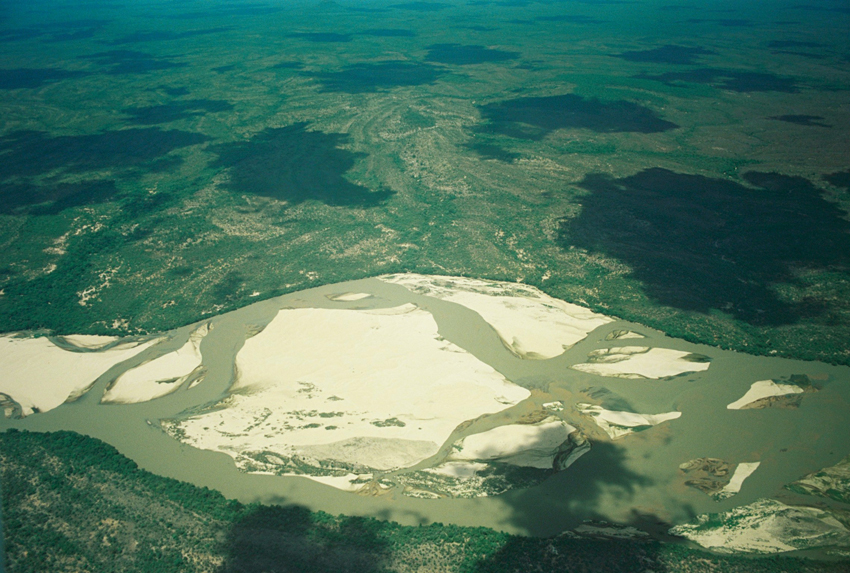IUCN-outsourced paper finds no proof Rufiji dam project can meet Tanzania’s development needs
A strategic environmental assessment meant to guide decisions on the Rufiji hydropower project in Tanzania’s Selous Game Reserve World Heritage site is completely inadequate, according to an independent technical review commissioned and issued today by IUCN. The document does not assess the project’s economic viability, social and environmental impacts, or project alternatives – which is the essence of such an assessment.

All rivers within Selous Game Reserve belong to the Rufiji system, Tanzania's largest basin
Photo: IUCN / Tilman Jaeger
The independent review concludes the Rufiji assessment falls “fundamentally short of both international and national guidance for [strategic environmental assessment (SEA)],” and therefore cannot be considered as one. “It certainly gives no confidence that the [Rufiji hydropower project] would be the best environmental, social or economic option to address the energy and development needs of Tanzania,” it states.
IUCN, the official advisor on natural World Heritage, commissioned the independent review after the World Heritage Committee concluded the scale of the project is to likely cause irreversible damage to Selous, which could lead to its World Heritage status being stripped. The Committee expressed utmost concern that construction had started before an SEA was conducted “to the highest international standards”.
Construction of dams with large reservoirs inside a site is considered incompatible with its World Heritage status. The Committee, IUCN and UNESCO’s World Heritage Centre have repeatedly urged Tanzania not to proceed with the Rufiji hydropower project. Also known as the Stiegler’s Gorge dam project or Nyerere hydropower project, it would involve a 130-meter-high dam on the Rufiji River, a 914 sq. km reservoir, and the deforestation of nearly 1,000 sq. km in the very heart of Selous.
SEAs are tools for decision-making at the early stages of an infrastructure project – before starting construction. The Rufiji assessment, issued in April 2019, came after a construction contract was signed and work began. “Given the advanced stage of project planning, this means the Rufiji assessment cannot deliver the credible input into strategic decision-making that an SEA is intended to provide,” the review points out.
The review notes that alternative project options, including alternative locations, are only superficially assessed. Consideration of a broad range of alternative scenarios generally forms the main bulk of an SEA. It also points to a general lack of public consultation and poor efforts to address the concerns of key stakeholders who were consulted.
Lastly, the independent review highlights that “widely available information on potential impacts have been ignored, and major potential impacts omitted.” Cumulative impacts of other projects and programmes in the Rufiji Basin are also not assessed, which the review qualifies as “a major gap compared to international good practice guidance and recent Tanzanian national policy”.
The Selous Game Reserve is one of Africa’s largest wilderness areas. Inscribed on the World Heritage List in 1982, it is home to iconic species such as the elephant and the Critically Endangered black rhinoceros. In 2014, the reserve was included on the List of World Heritage in Danger due to elephant poaching, and in 2018 the threat from the Rufiji project was added to the justification for danger-listing.
The project could ultimately cost the Selous Game Reserve its World Heritage status. It would flood the habitats of the site’s last remaining black rhinos and could open up the core of the reserve to human development.
The independent review was sent to the Tanzanian Government in November 2019 for comments.
